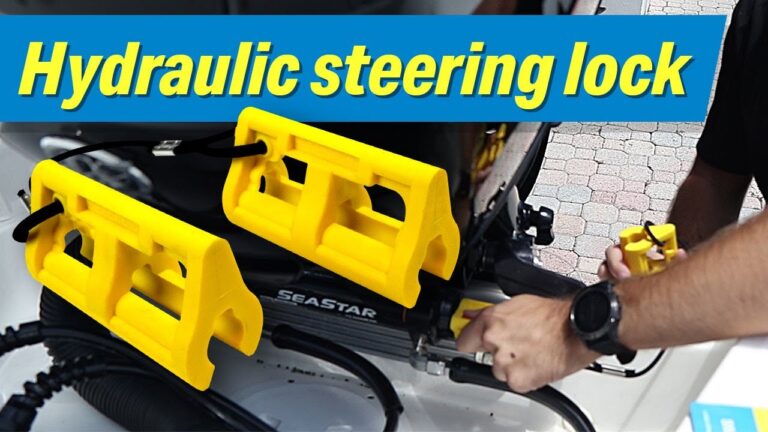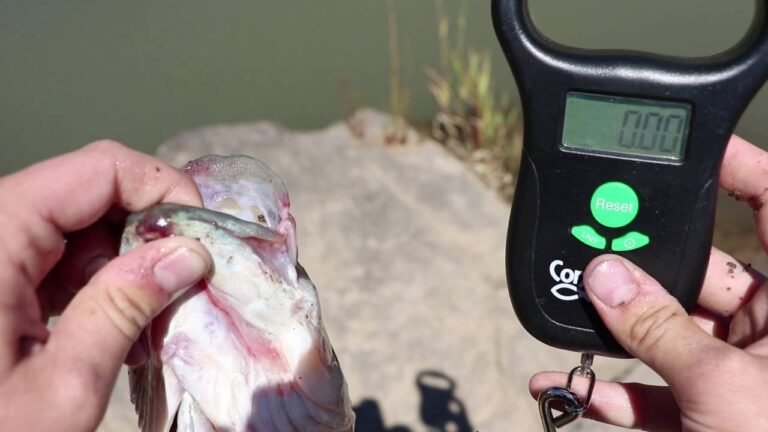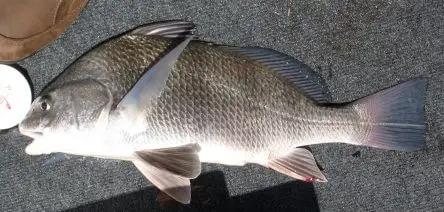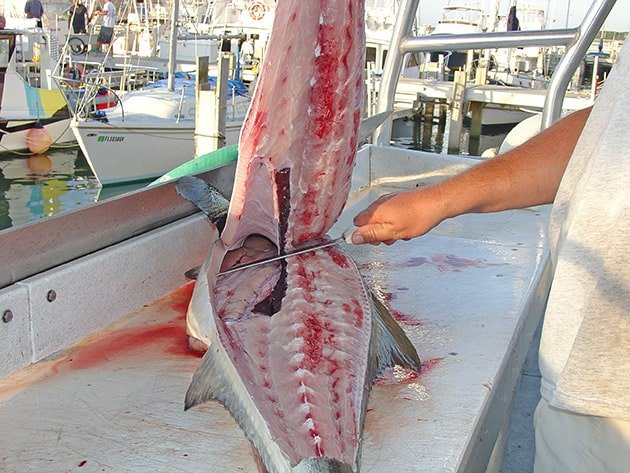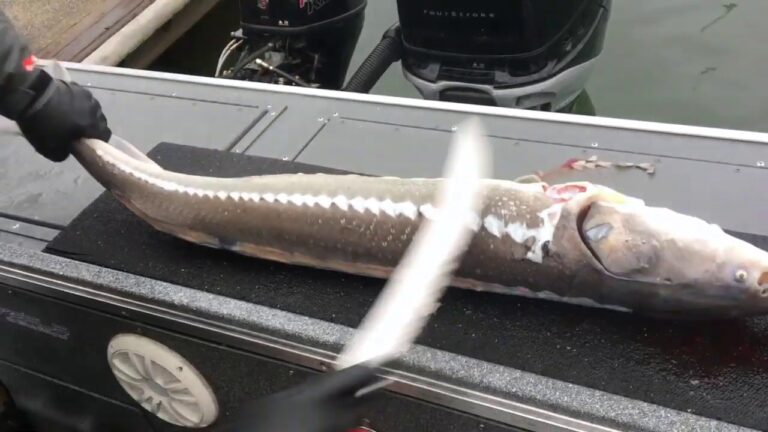How Much Line to Put on a Baitcaster | Proper Line Capacity for Baitcasters 2025
The number of line you put on a baitcaster reel depends on the size of the reel. For example, a common size for a baitcaster reel is 200 yards of 14-pound test line.
How much line to put on a baitcaster? This is a question that I get asked all the time, and it’s one that doesn’t have a definitive answer. The amount of line you put on your baitcaster will depend on a few factors, including the size of your reel, the type of fishing you’re doing, and the conditions you’re fishing in.
In general, most baitcasting reels hold between 150 and 200 yards of line. If you’re just starting out, or if you’re fishing in relatively calm conditions, putting somewhere around 150 yards of line on your reel is probably a good place to start. If you’re an experienced angler, or if you’re fishing in rougher waters, you might want to put more line on your reel – up to 200 yards or even more.
Of course, there are exceptions to every rule. If you know you’ll be fishing with lures that don’t require a lot of line (like small crankbaits), then you can get away with putting less line on your reel. And if you’re targeting really big fish (like muskie or pike), then putting more line on your reel can give you the extra length and strength needed to land them safely.
Ultimately, how much line to put on a baitcaster is something that each angler has to figure out for themselves. There’s no right or wrong answer – it all depends on what works best for YOU under the specific conditions YOU are fishing in. So experiment a little bit and see what works best for YOU!
Is 100 Yards of Fishing Line Enough
When it comes to fishing line, the general rule of thumb is that the heavier the line, the longer it will last. So, if you’re using a light-duty spinning reel for trout fishing in a river, you might get away with using just 100 yards of 4-pound test line. But if you’re trolling for big fish offshore, you’ll want at least 800 yards of 20-pound test on your reel.
Of course, there are always exceptions to the rule. If you’re fishing in very clear water and need to be extra stealthy, use lighter line so your prey won’t be spooked by the thicker diameter. In murky water or around heavy cover, go with a heavier line so it’s less likely to snap when a fish thrashes around.
And if you’re really not sure how much line you need, err on the side of caution and bring along an extra spool or two.
How Much Braided Line to Put on a Spinning Reel
How Much Braided Line to Put on a Spinning Reel
Braided fishing line is incredibly strong and durable, making it a popular choice among anglers. However, because it doesn’t have as much stretch as other types of fishing line, it’s important to be careful not to overload your spinning reel with too much braided line.
So how much braided line should you put on a spinning reel?
A general rule of thumb is to fill the spool so that it’s about two-thirds full. This will give you enough line to make long casts while still leaving room for the line to expand when you hook into a fish.
If you’re using braided line for saltwater fishing, you may want to fill the spool closer to three-quarters full since saltwater fish tend to be larger and more powerful than freshwater fish.
When loading braided line onto your spinning reel, be sure to use a backing material such as mono or fluorocarbon before adding the braidedline. This will help prevent the braid from slipping on the spool and also provide extra protection against abrasion and breakage.
Once you’ve added the backing material, simply tie on your chosen lure or bait and start fishing!
How Much Line to Put on Reel
How much line to put on reel is a question that many anglers face when they are first starting out. The answer to this question is not as simple as it may seem. There are a few factors that need to be considered when determining how much line to put on reel.
The first factor is the size of the fish you are targeting. The second factor is the type of fishing you will be doing. The third factor is the water conditions you will be fishing in.
The Size of the Fish You Are Targeting: When deciding how much line to put on your reel, it is important to consider the size of fish you are targeting. If you are targeting smaller fish, then you can get away with putting less line on your reel. However, if you are targeting larger fish, then you will need to put more line on your reel in order to be successful.
Type of Fishing You Will Be Doing: Another factor that needs to be considered when determining how much line to put on your reel is the type of fishing you will be doing. If you are going to be using live bait, then you will need more line than if you were just using lures or artificial baits. This is because live bait tends to swim away from shore and can go deeper into the water where larger fish reside.
Is 125 Yards of Fishing Line Enough
If you’re an experienced fisherman, you know that the answer to this question depends on what kind of fish you’re trying to catch. For smaller fish, 125 yards of line should be plenty. But if you’re going after a big one, you may need more line to be successful.
Here’s a breakdown of how much fishing line you’ll need for different types of fish:
– Smaller fish like trout or panfish: 20-30 pound test line will do the trick. You won’t need more than 125 yards of this type of line.
– Larger fish like bass or pike: 50-60 pound test line is better suited for these guys. You may want to consider 200 yards or more if you’re targeting trophy fish.
– Saltwater fish: The heavier the better when it comes to saltwater fishing.
80-100 pound test line is not uncommon for serious anglers fishing in the ocean. Again, you may need even more depending on what type of fish you’re after.
Can You Put Too Much Line on a Baitcaster
If you’re using a baitcaster, it’s important to be aware of how much line you have on your reel. If you put too much line on, it can lead to problems when you’re casting. The excess line can cause the bail to open prematurely, which will result in an overrun.
It can also cause the spool to become unbalanced, making it difficult to control your casts.
If you find that you’re constantly having problems with overrunning or unbalanced spools, it’s likely that you’re putting too much line on your reel. Try removing some line and see if that helps improve your casting accuracy and efficiency.

Credit: www.fishing-tips-bait-tackle.com
How Much Line Should I Put on a Baitcaster Reel?
Most baitcasting reels have a line capacity of around 100 yards, so that’s a good starting point. However, the amount of line you put on your reel will also depend on the size of the fish you’re targeting. If you’re going after big fish, then you’ll need more line.
As a general rule of thumb, it’s always better to err on the side of too much line rather than too little. That way, if you hook into a monster fish, you won’t have to worry about running out of line and losing your prize!
Do You Put All 10 Pound Line on Baitcaster Reel?
No, you would not put all 10 pound line on a baitcaster reel. The reason being is that baitcasters are designed to handle a certain amount of line weight and putting more than that on the reel can cause problems. The 10 pound line would be too heavy for the bail and could cause it to break or come off of the spool entirely.
In addition, the drag system on most baitcasters is not designed to handle that much weight, so it could fail under the strain and cause your fish to get away.
How Much Braid Do You Need on a Baitcaster?
When it comes to baitcasting, the amount of braid you need on your reel depends on a few factors. The first is the size of the fish you’re targeting. If you’re going after smaller fish, you can get away with using less braid.
However, if you’re targeting big gamefish, you’ll need more braid for added strength and durability.
Another factor to consider is the type of water you’ll be fishing in. If you’re fishing in open water with no obstructions, you won’t need as much braid.
But if you’re fishing around docks or in heavy cover, more braid will give you the abrasion resistance you need to avoid getting hung up.
Finally, it’s important to think about your own fishing style when determining how much braid to use. If you like to cast long distances or make hard retrieves,you’ll need more braid than someone who fishes shorter distances or makes gentler retrieves.
In general, most anglers use between 150-200 yards of braided line on their baitcasting reels. This gives them enough line to handle most situations they’ll encounter while still keeping the reel manageable and easy to control. Of course, there are always exceptions and some anglers may prefer more or less braid depending on their individual needs and preferences.
How Do I Know How Much Line to Put on My Reel?
How much line to put on a reel is a question that many anglers ask themselves. The answer to this question depends on the type of fish you are targeting, the size of your reel, and the type of fishing you are doing. If you are using a spinning reel, then you will need to put more line on your reel than if you were using a baitcasting reel.
The reason for this is because spinning reels have less line capacity than baitcasting reels. When it comes to putting line on a reel, there are two schools of thought; some anglers believe that you should fill your reel all the way up to its maximum capacity, while others believe that you should only put enough line on your reel so that it can comfortably hold all the line you need for one fishing trip. There really is no right or wrong answer when it comes to how much line to put on a reel; it ultimately comes down to personal preference.
How To Put Line on Baitcaster – EASY
Conclusion
This blog post talks about how much line to put on a baitcaster. The author says that you should put on enough line so that the spool is two-thirds full. They also say that you should use a heavier line if you are fishing in deep water or with heavy lures.


